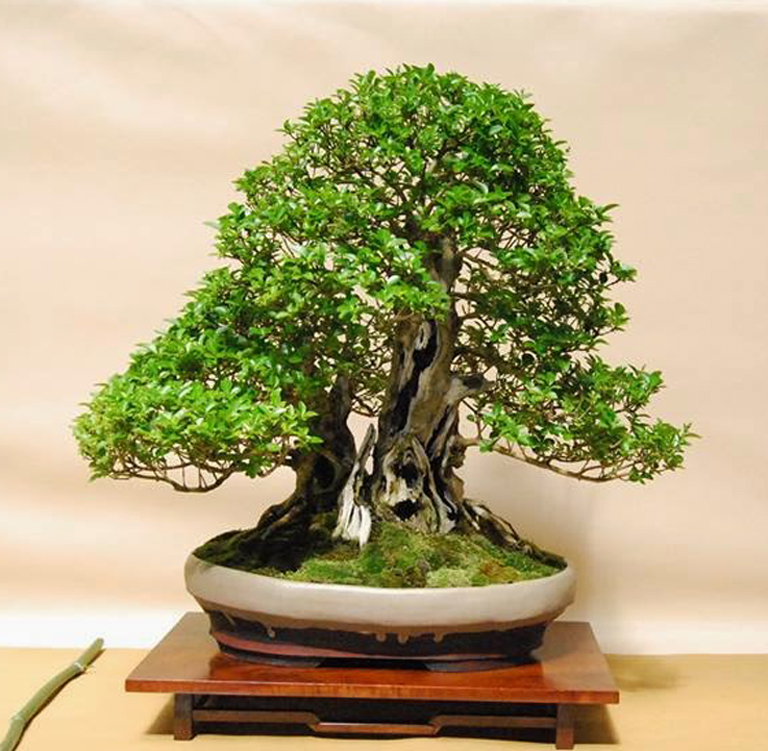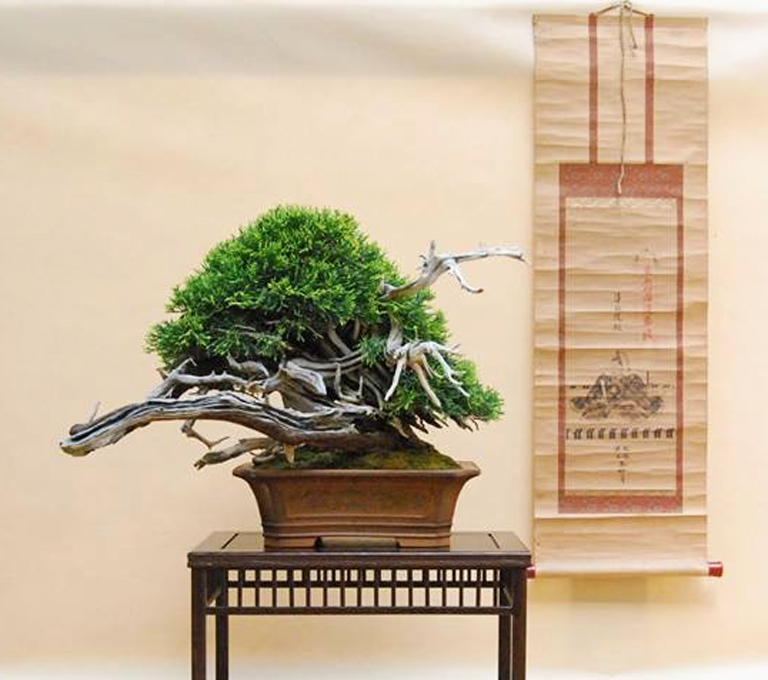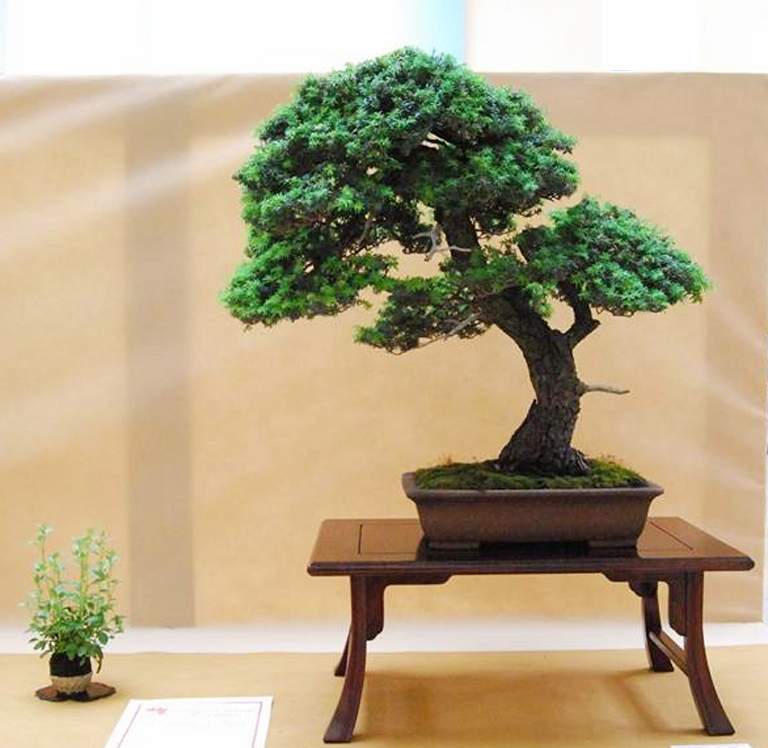
Based on the photos from Sandor Papp’s blog, this, or the tree just below, might be my exhibition winner (the actual winner is at the bottom of the post). It’s unusual to see this much deadwood on a deciduous or other broad-leafed bonsai, but then Privets are tough trees (Ligustrum vulgaris in this case). Speaking of deadwood you might notice the impressive sabamiki (Japanese for hollow trunk – plural in this case). The unique, well-chosen pot is also worth a mention.
The trees shown here appear on the Bonsai Blog of Sandor Papp. The occasion is the recent bonsai exhibition in Wroclaw Poland. I’m assuming that Sandor took all of the photos (we’ve presented just a small sampling here). The excessively wordy captions are all mine.
Sandor Papp’s name popped up in our last post and though I’ve know of Sandor for years, we’ve never featured him on Bark. In this case, it’s Sandor’s blog rather than his trees we’re featuring, but we’ll get to his trees soon enough.

This powerful flowering Hawthorn by Richard Chambers (artists are mentioned with some trees but not with others) provides another example of deadwood on a deciduous tree. There is plenty to like about this tree, including the flowers, the taper, the fluid movement and particularly the two-trees-in-one effect, but you’ll need to ignore the arrow that’s trying to get you to look off to the left.

That’s some pretty impressive deadwood. It’s a Sabina juniper (no artist mentioned). It’s a fantastic yamadori, but I wonder if the crown could be opened up some. Especially considering that the deadwood tells a story of great abuse by the hostile forces of nature, while the crown speaks of fat times. Maybe the artist felt that it needs to be so dense in order to avoid being overwhelmed by all the deadwood…

The actual winner. It’s a Tsuga (Hemlock, species not mentioned) by Harald Lehner. Unfortunately, the photo is a little dark, so it’s hard to appreciated the subtleties. What is easy to appreciate is the tree’s overall power, especially the strong trunk. However (brace yourself), like the juniper just above, I wonder if the tree wouldn’t be better served by reducing and further opening up the foliage. Doing this might help accentuate the powerful trunk.
I agree about opening up the Hemlock foliage. The “shrubbiness” of the luxuriant growth gives it a juvenile proportion with respect to the trunk.
Hi Michael,
Yes. It seems obvious. But still, great material with only a little more work needed.